November 28, 2021
Martha O'Kennon
Like last week, we had everywhere from less than zero F to the 50's F. What confusing weather - it must be Fall in Michigan! Yesterday we had a few more grains of that "little balls"-type snow. Spooky has been particularly distressed, since she likes to have her meals outside with no interruption, and now she can't. On one of those nights, it was already 31 F (less than 0 C). I went out to restore the towels on Jadesy, and she felt so cold that I brought her indoors. I think she is surviving, but our experiment failed this year! Pity won out!
Here is Jadesy, looking a bit drab because of her ordeal. I'll clip off the grey-green leaves - good bits are green enough to survive! Next is the bright red Red Oak leaf from last week, but now they are a good bit browner. Third is the leaf net fairly full of leaves, while ice-fingers stretch out over the top of the water.
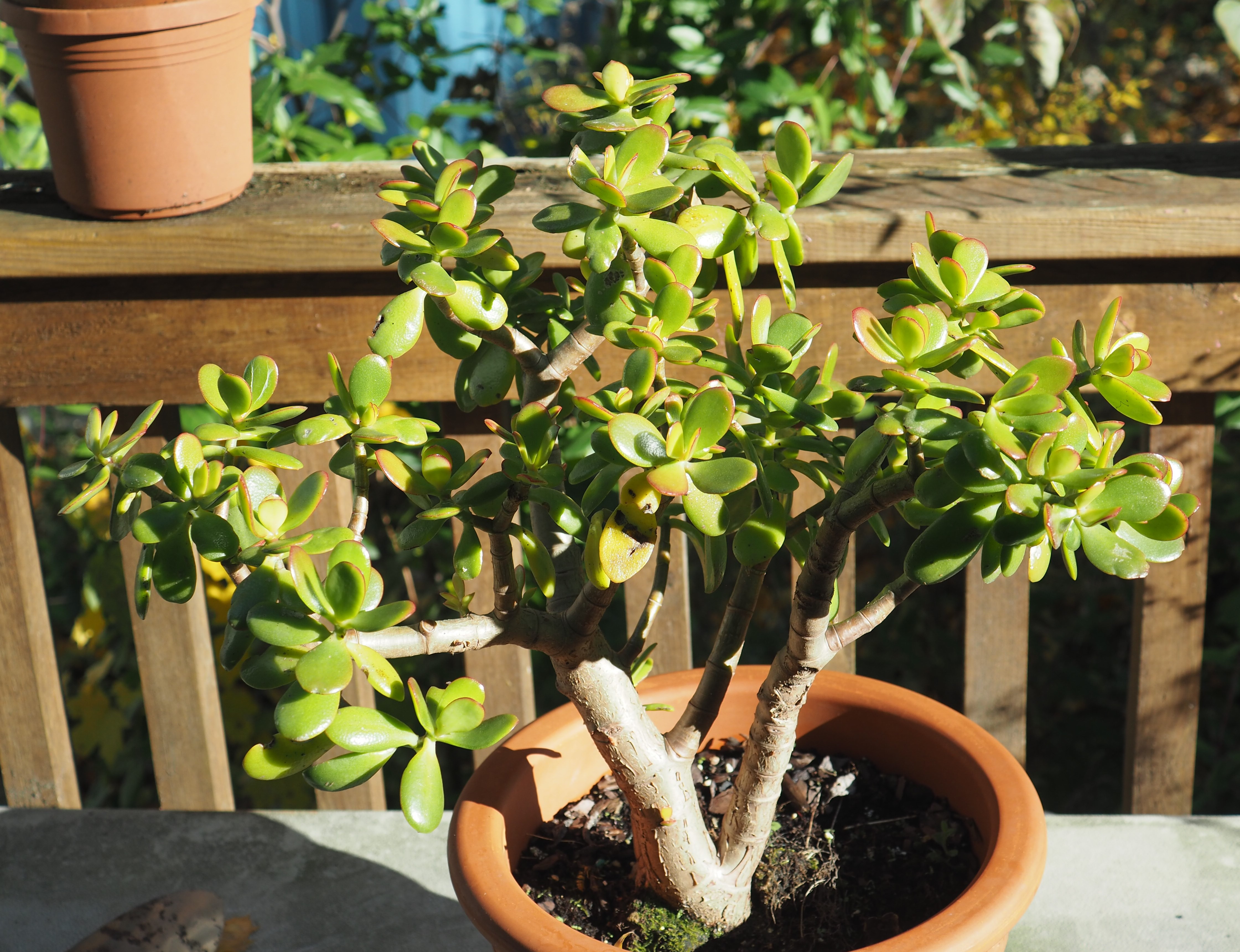
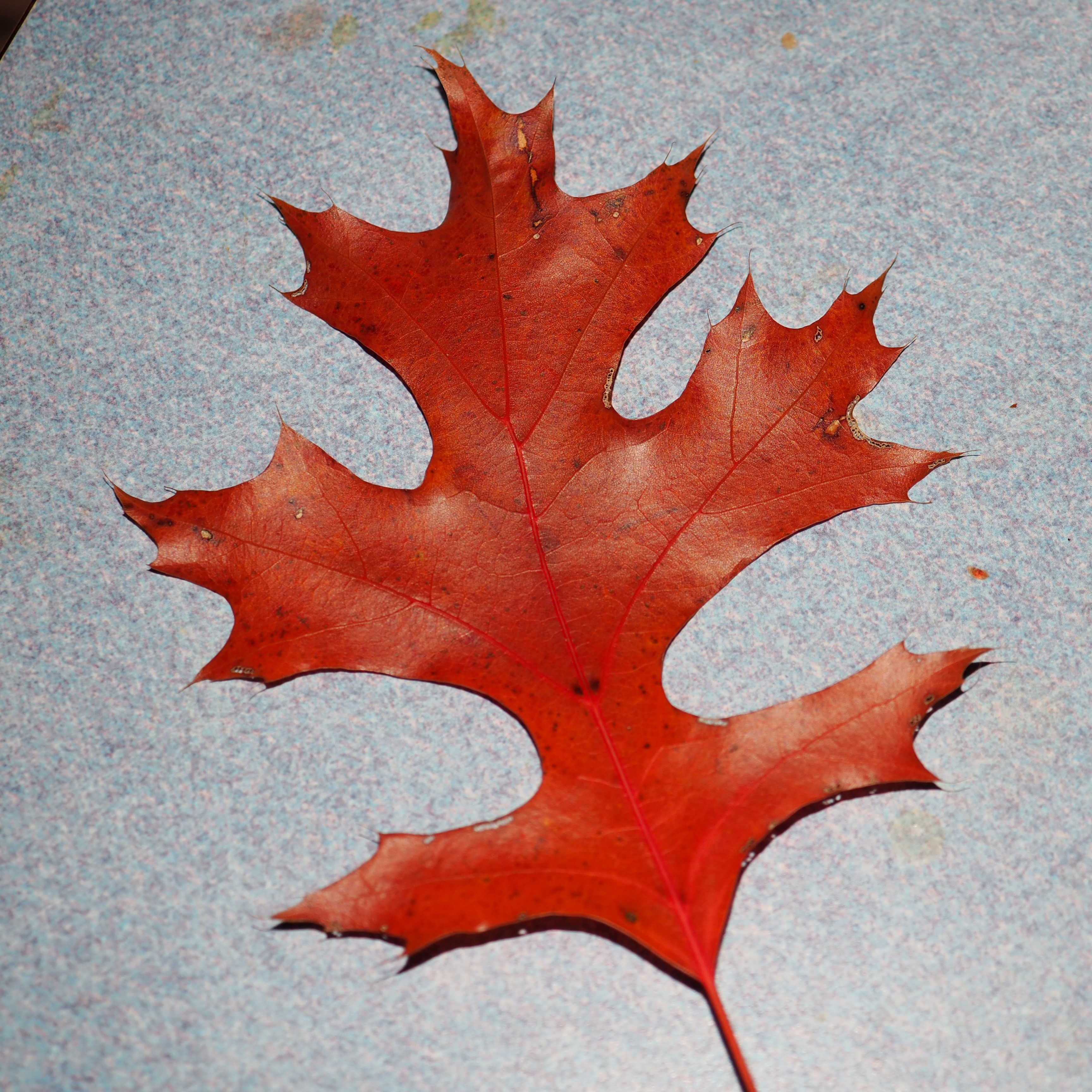

Remember that there is information in the name of the file for each image. You can see it by mousing over the
image - look at the lower left of the screen. Or you can click on the image to get to the (usually) larger image.
Then the info is displayed in the address line above. Sometimes the second click will actually display a
different view of the original image.
Remember how one week we had NO ants to speak of, and the next there were a plethora of Ant photos to choose from. Well, we are back into Ant Pattern 1 again, and all we see anywhere are a couple of Small Honey Ants! But wait! If we enlarge the small pattern underneath the Ant, we see a mystery scene. I wonder what it will turn out to be!
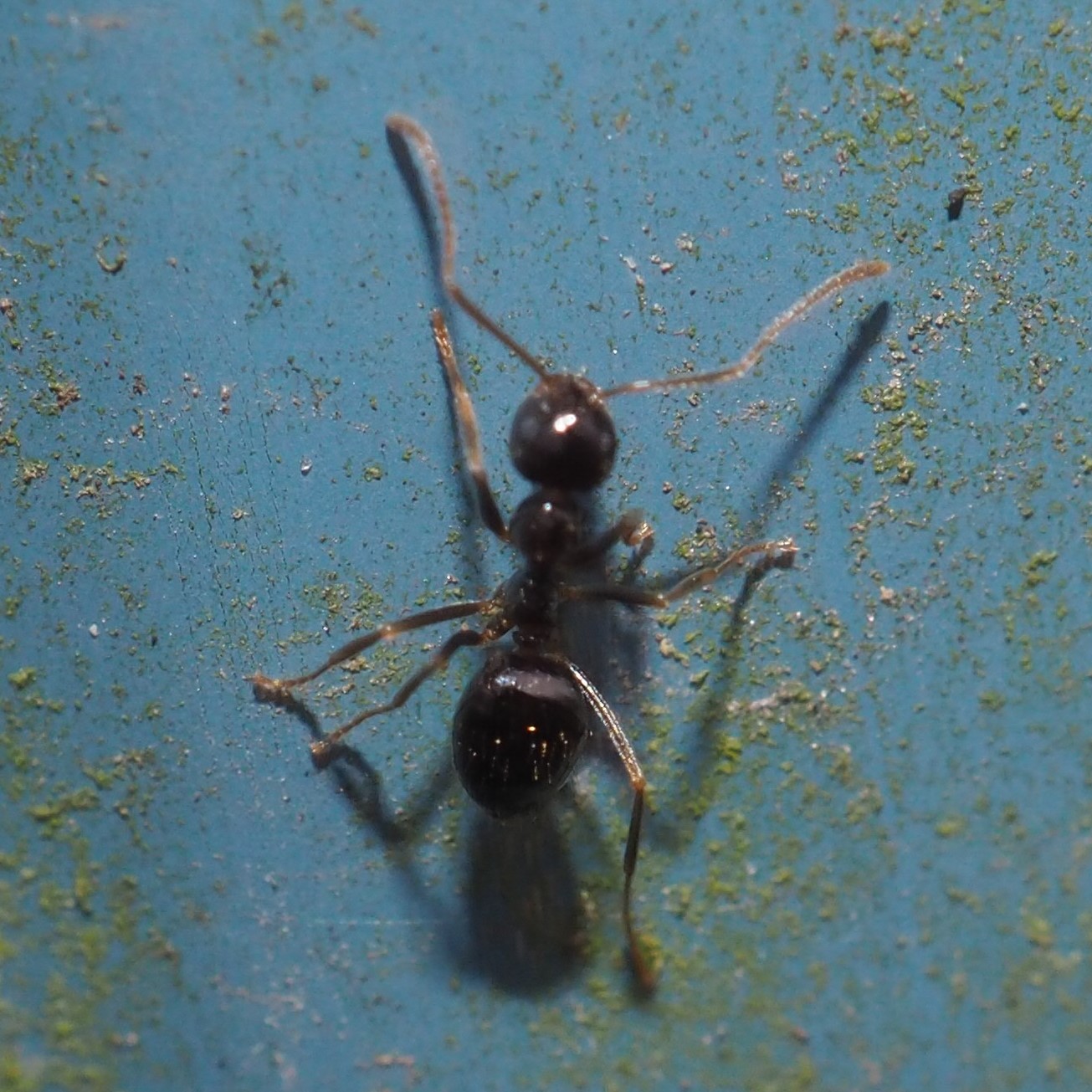
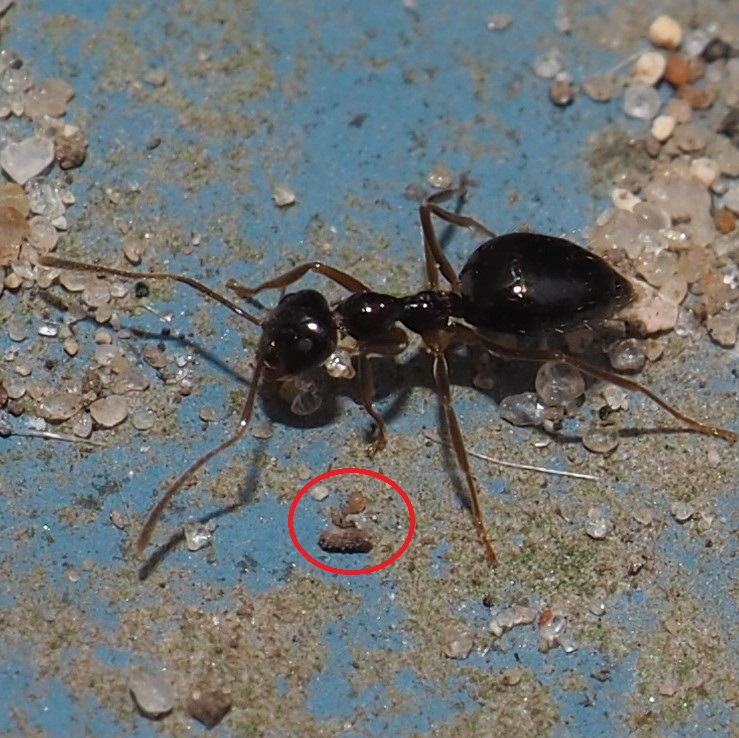
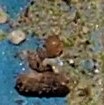
Let's look at the most recent Barklouse eggs. The ones that seem more separated from each other, slightly elongated, and yellow-white color are most likely to be eggs of Graphopsocus cruciatius.
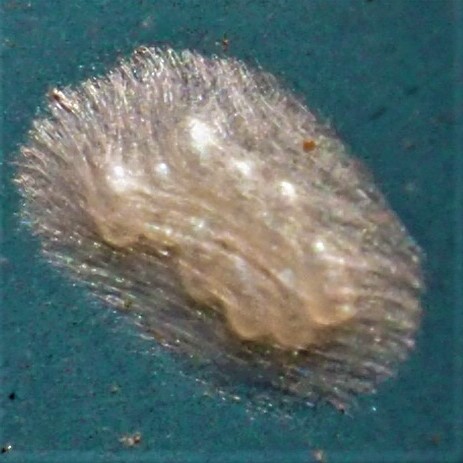

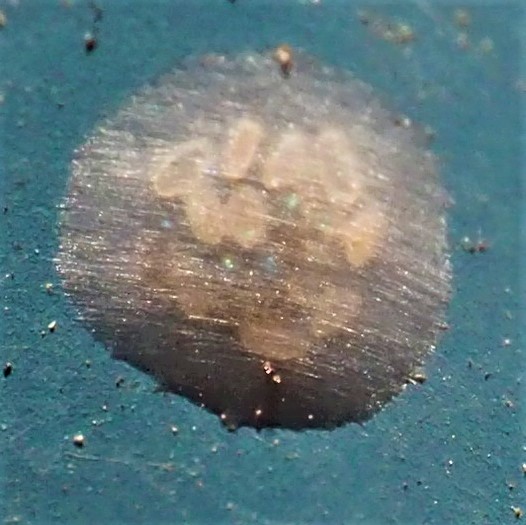
These eggs are also elongated, but brown, not yellow-white. They're more stick-like under that heavy web. Picture 1 was shot 3 days after picture 2.

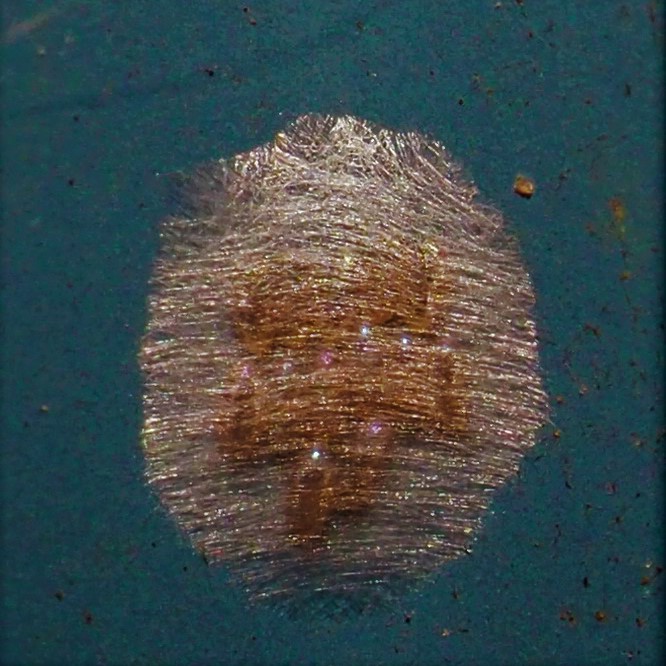
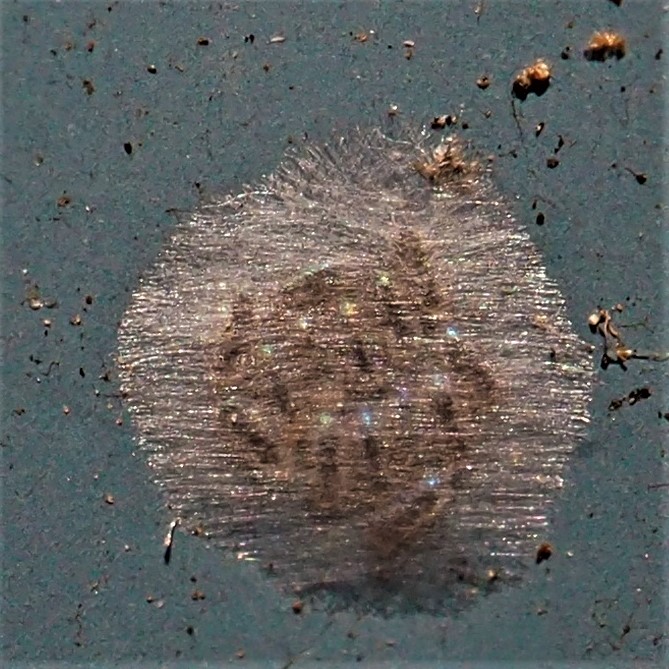
The eggs that grabbed so much of my attention are these that seem to be wrapped in brownish straw packages. I take a picture of them every day but they don't seem to be changing much. Maybe they will overwinter in this state. The individual eggs seem fairly separate with a chunky nymph-to-be inside the "straw". Let's see what transpires... Another rarer form of nest seems to have the individual critters in a sort of twisted pattern that enhances any iridescence, as in picture 3.

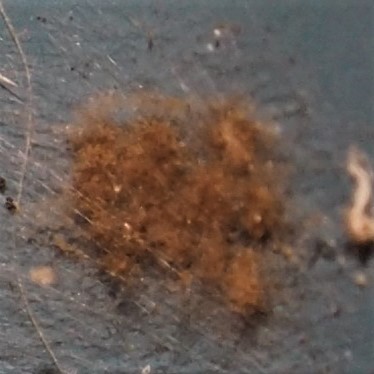
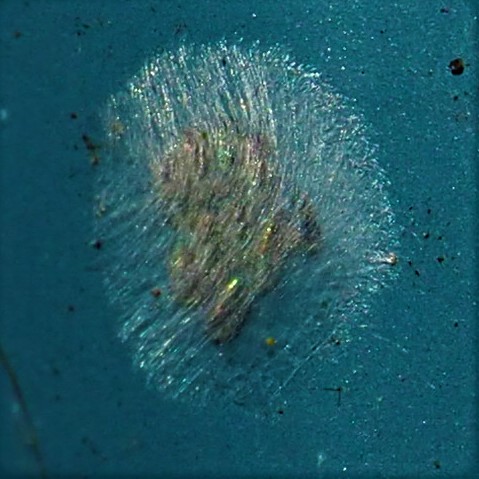
Here are some re-runs from the November 21 Blog. In picture 1, I wonder if the fleece has fallen off the naked eggs or if they are two different kinds of Barklice. The first picture is a detail of the second.

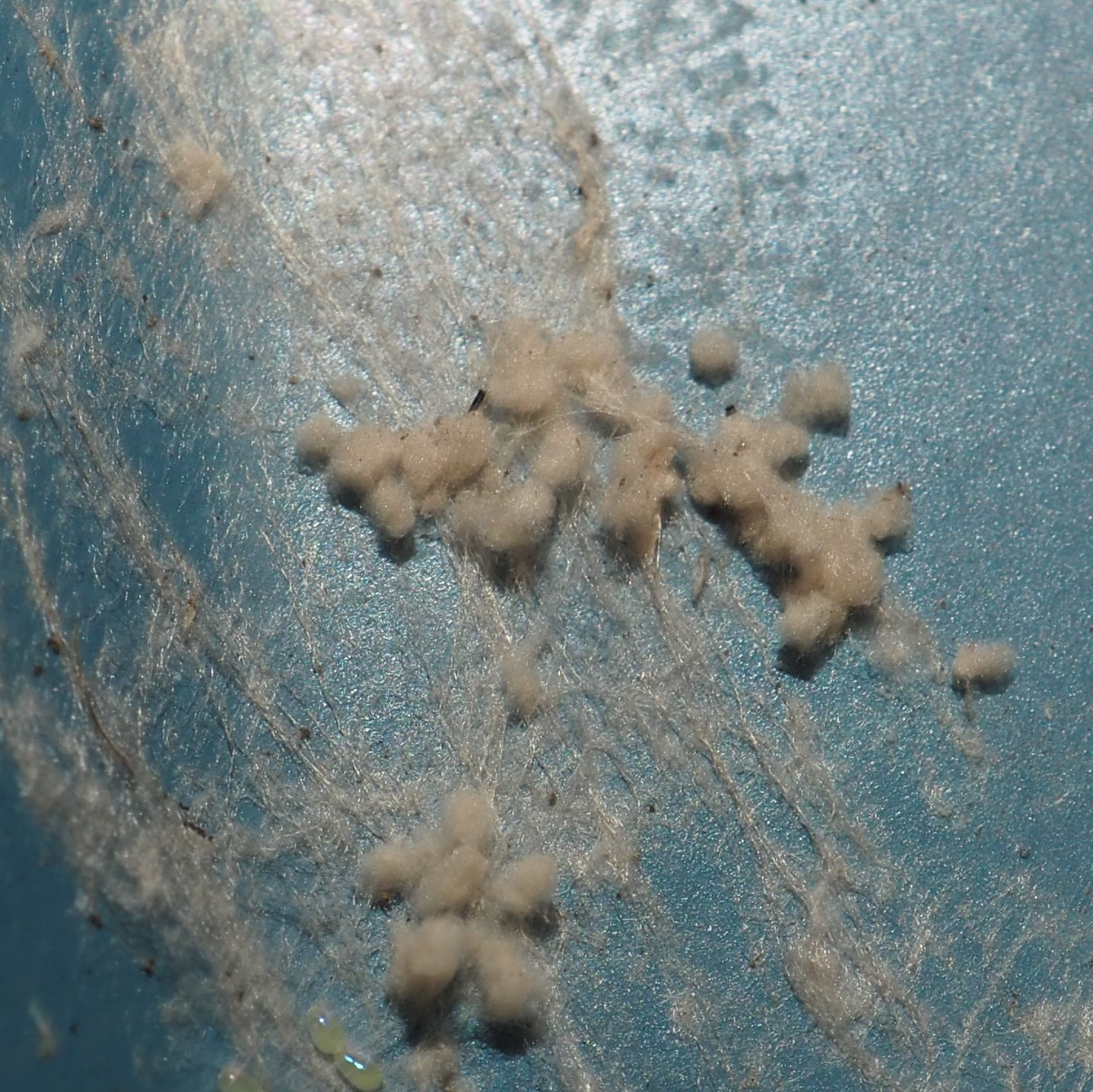
Here are just a couple of the Graphopsocus adults we saw this week.
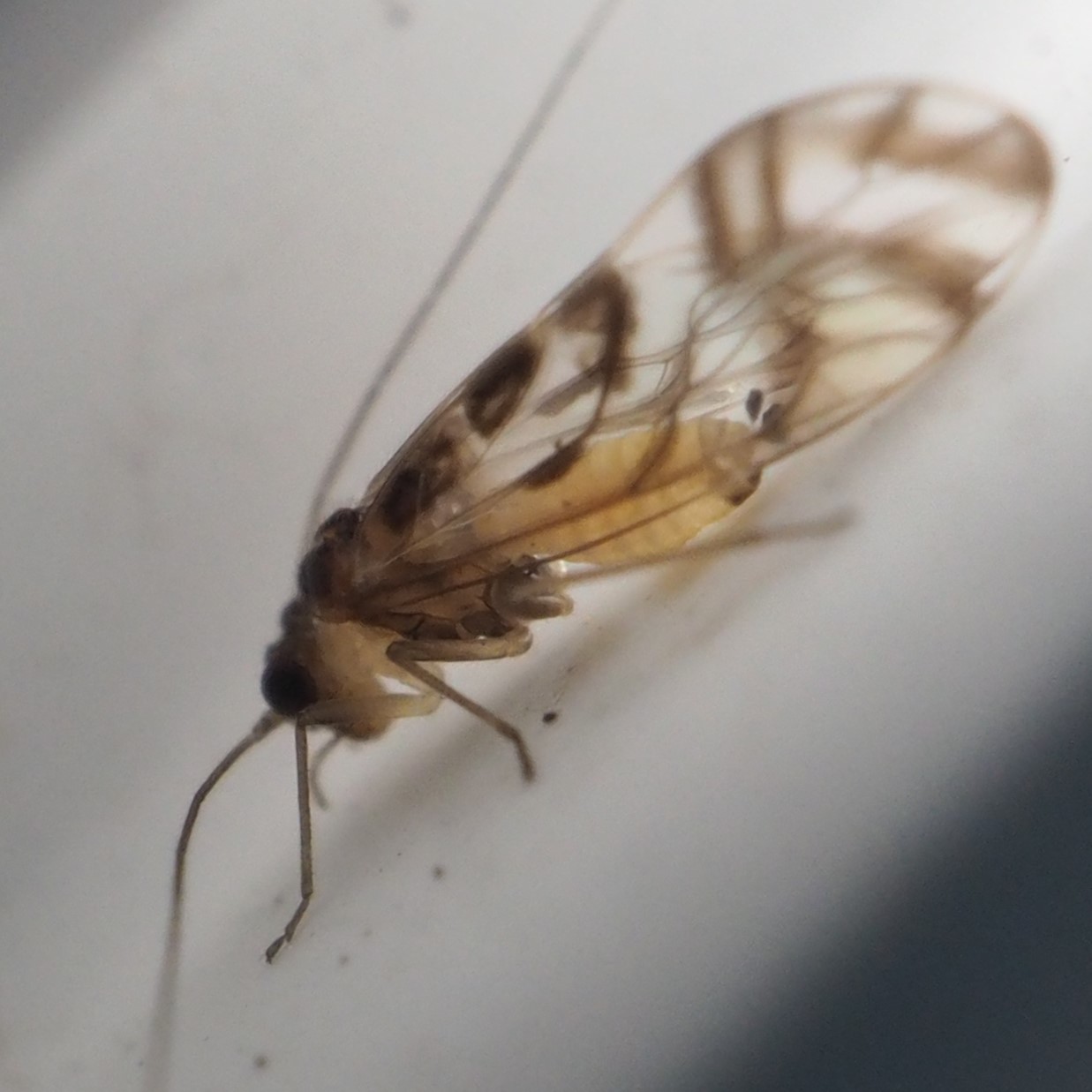
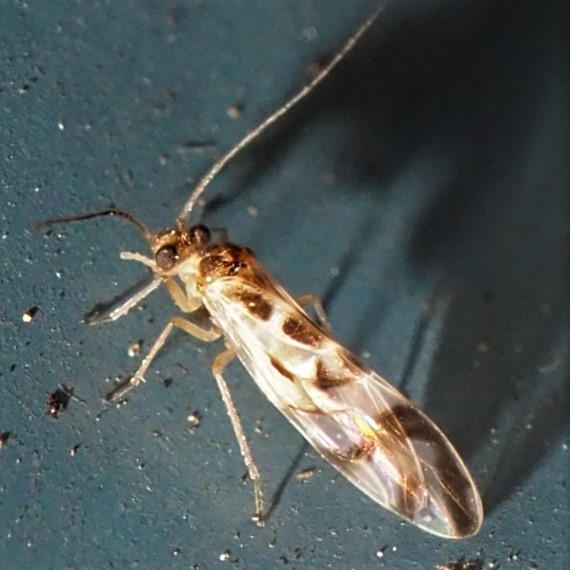

The Graphopsocus nymphs are still out there, in various places. The second of these almost looks like a Valenzuela flavidus nymphs, but there are some strokes in the thorax that resemble the placement of the thoracic dots that show it is a Graphopsocus nymph. What a conundrum!
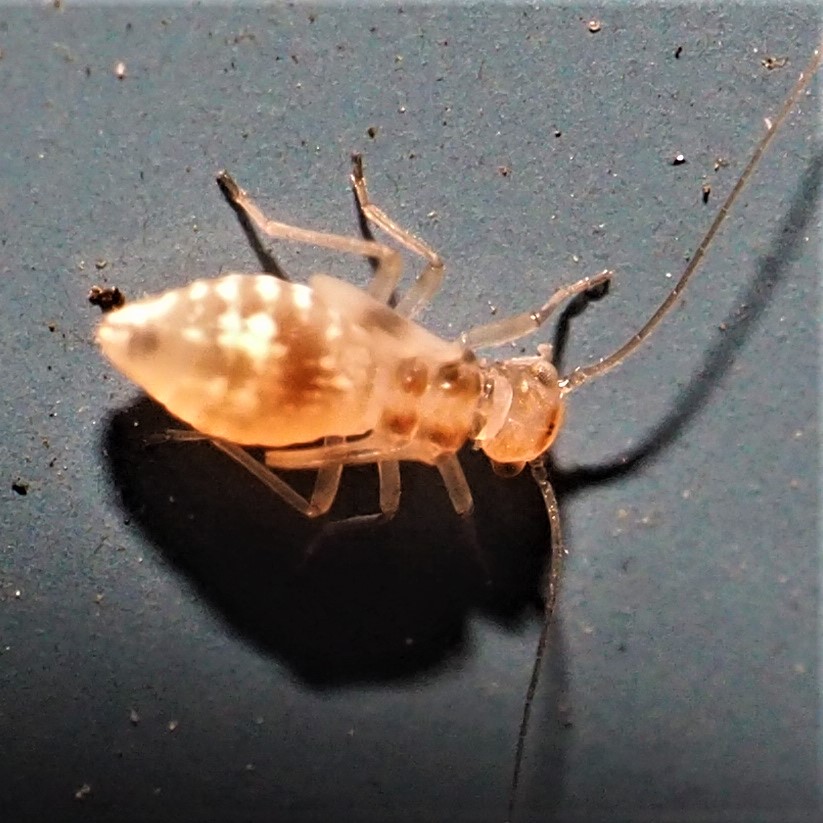
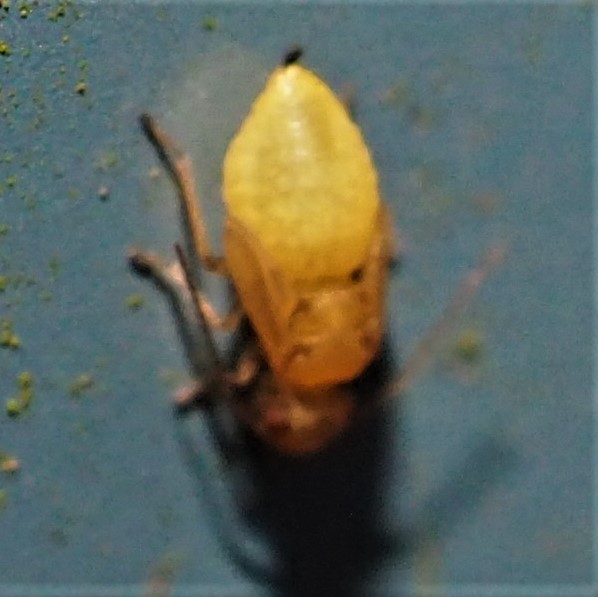
But is there a Beetle out there? Last week the Small Dung Beetle (picture 1) finally broke the waters for the Beetles. But that was it - no more Beetles that I could see this whole week. So let's move to the Bugs. Anyone see an Assassin Bug out there? Me either, so let's see what we found in the way of Leafhoppers. First Leafhopper, pictures 2 and 3, is a common hopper, but also hard to figure out the species. The genus is probably Empoasca, but we only have this one down to Tribe Emposcini. Picture 4 shows Erasmoneura vulnerata.
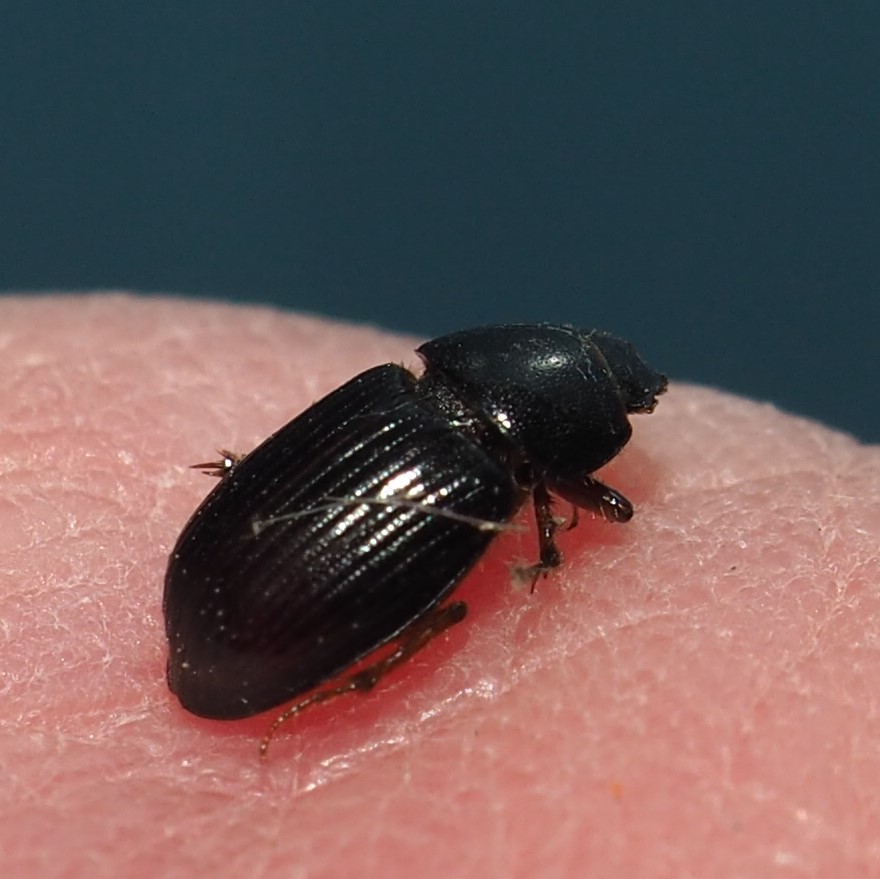
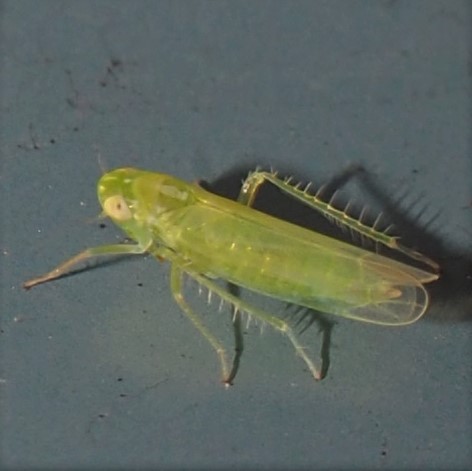
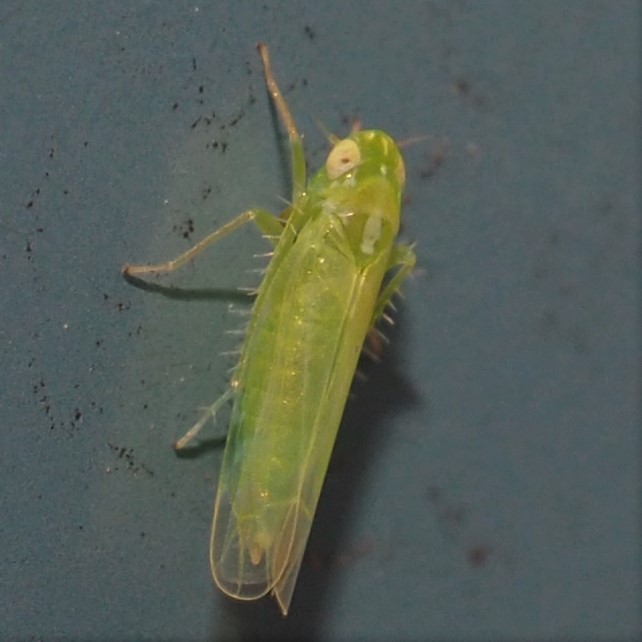
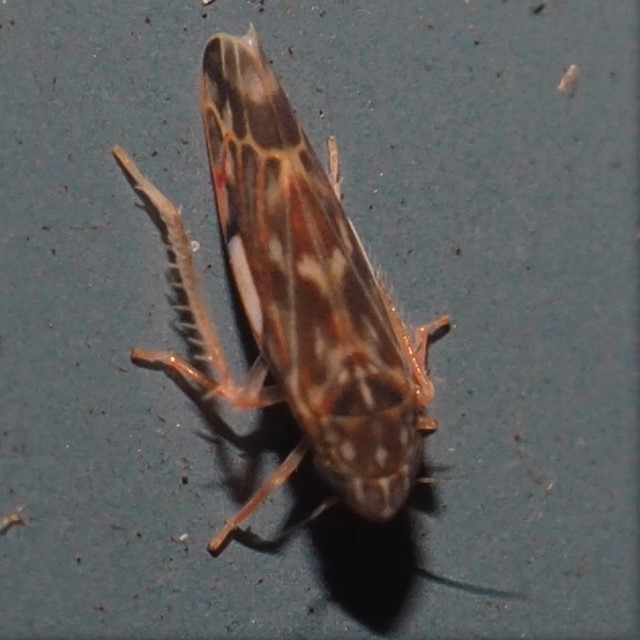
Here are a few more Leafhoppers. The first, an Eratoneura member from last week, is another hard one to get to species. Second is an Erythridula with red "V" markings. But number 3, from this week, was another one (this one with kind of washed-out yellow "V" markings) seeming to be lying on its back on top of a pine-needle. A month or so earlier an expert on iNat had said that most leafhoppers overwinter in the adult stage. If this one is just asleep, it must prefer "Kippin' on its back". But Kyle Kittelberger, iNat's @hopperdude215, agreed with me that it looks quite dead. Sad indeed...
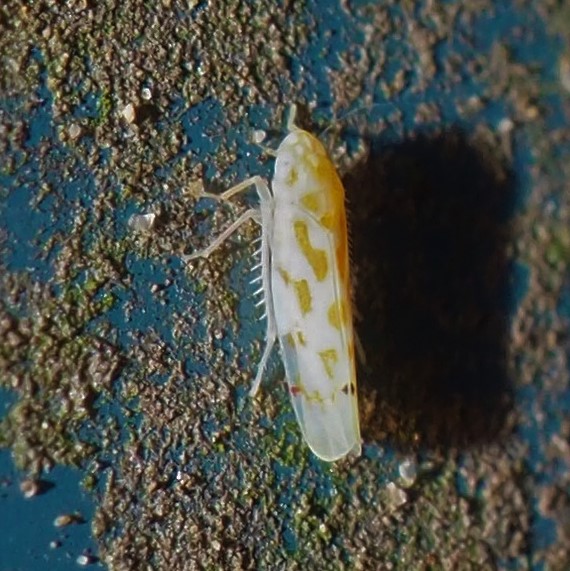
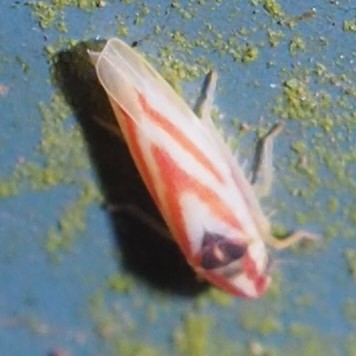
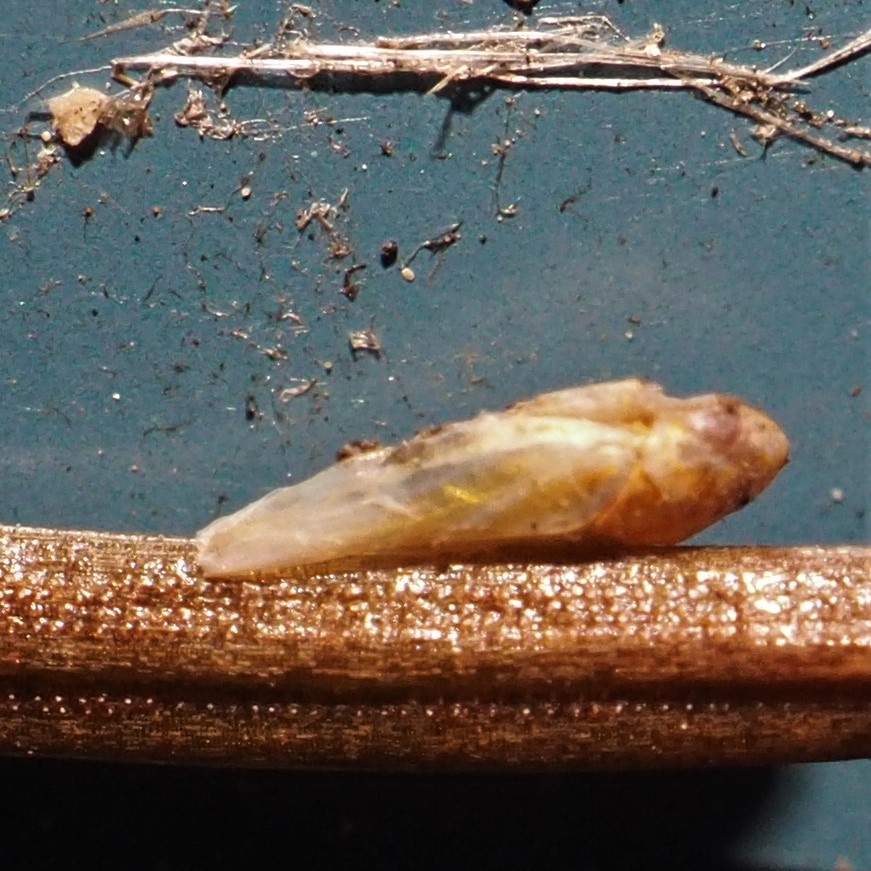
We still have a couple more Bugs, specifically two in the genus Drymus. They are so-called Dirt-colored Seed Bugs. A few years we finally found out what the very "plain-looking" Bug was that showed up when the Goldenrod was folding, and graced the Wall down near the bottom until early Spring. You have got to love someone who sticks around when there isn't much to stick around for! After learning what the brown-and-black version was (Drymus unus), I hoped to be able to put a name to the all-black version. But the probe I sent out 6 years ago was just answered by @imasongster - Mark Richman of iNat, it's Drymus crassus. So thanks to you Mark! Picture 3 was one of the D. crassus photos from November 11, 2015. It is the only picture I have of eggs of any Bug but a Stink Bug. Keep an eye out for either D. unus or D. crassus!
They seem to be around at about the same times of year.
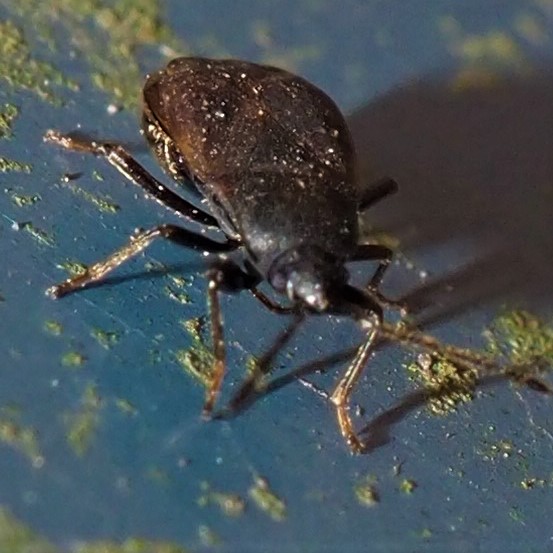

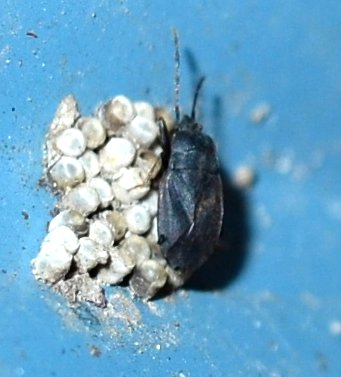
There were a few Flies, even a couple of snow-loving Mosquitoes. (I just made that up but if in the future you decide you would like to credit me with discovering such a Mosquito before finding a photo, feel free.)
This first one is a Non-biting Midge and really alive out there. I've no clue what the second one is.
.
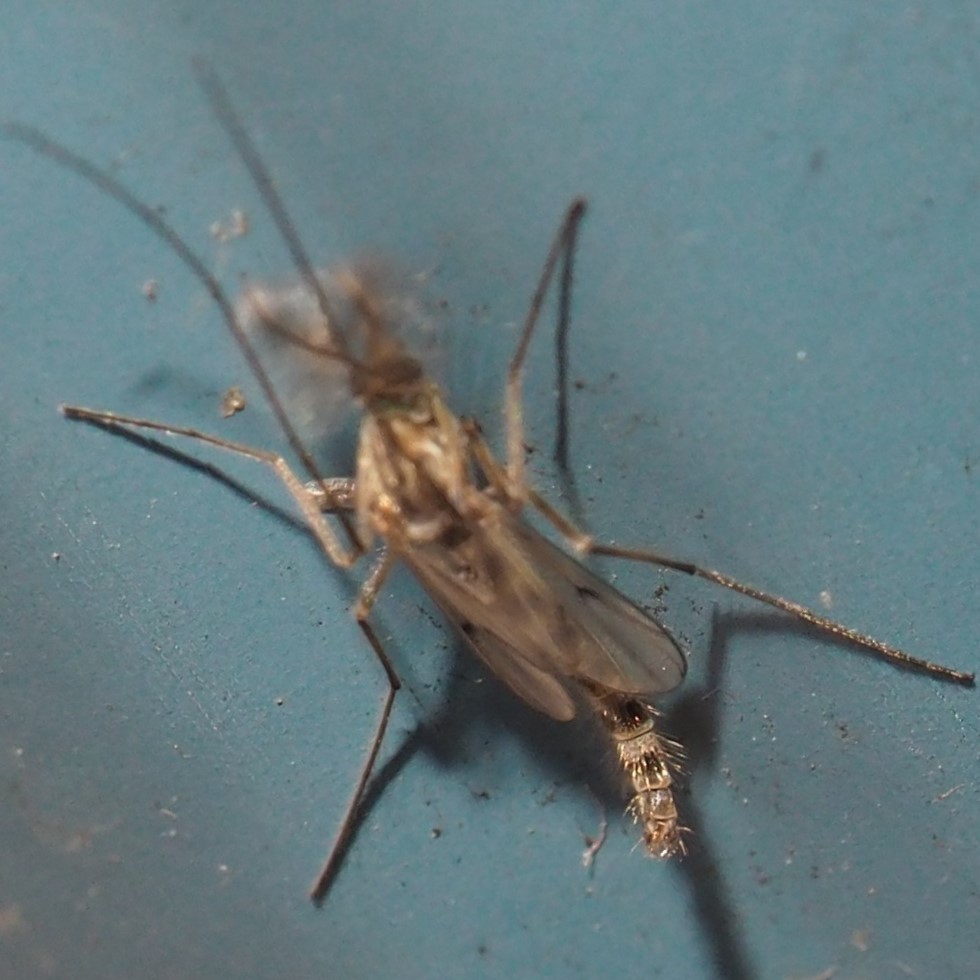
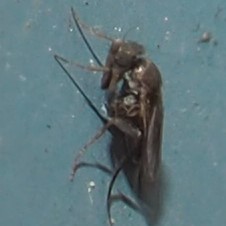
That brownish Green Lacewing was still around this week. I would have thought it was well done dead, but it seemed to be moving around on the space it was on last week.
.
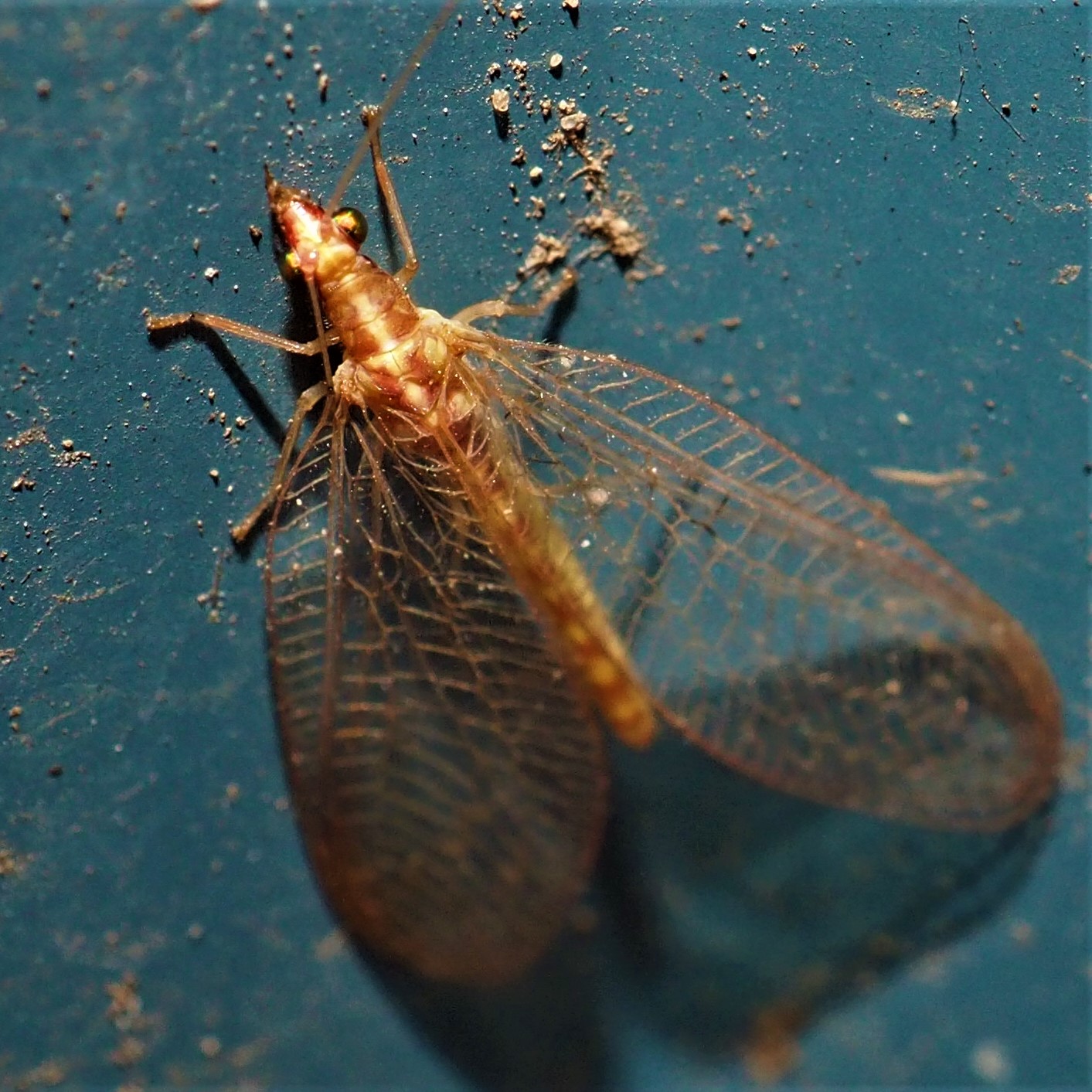
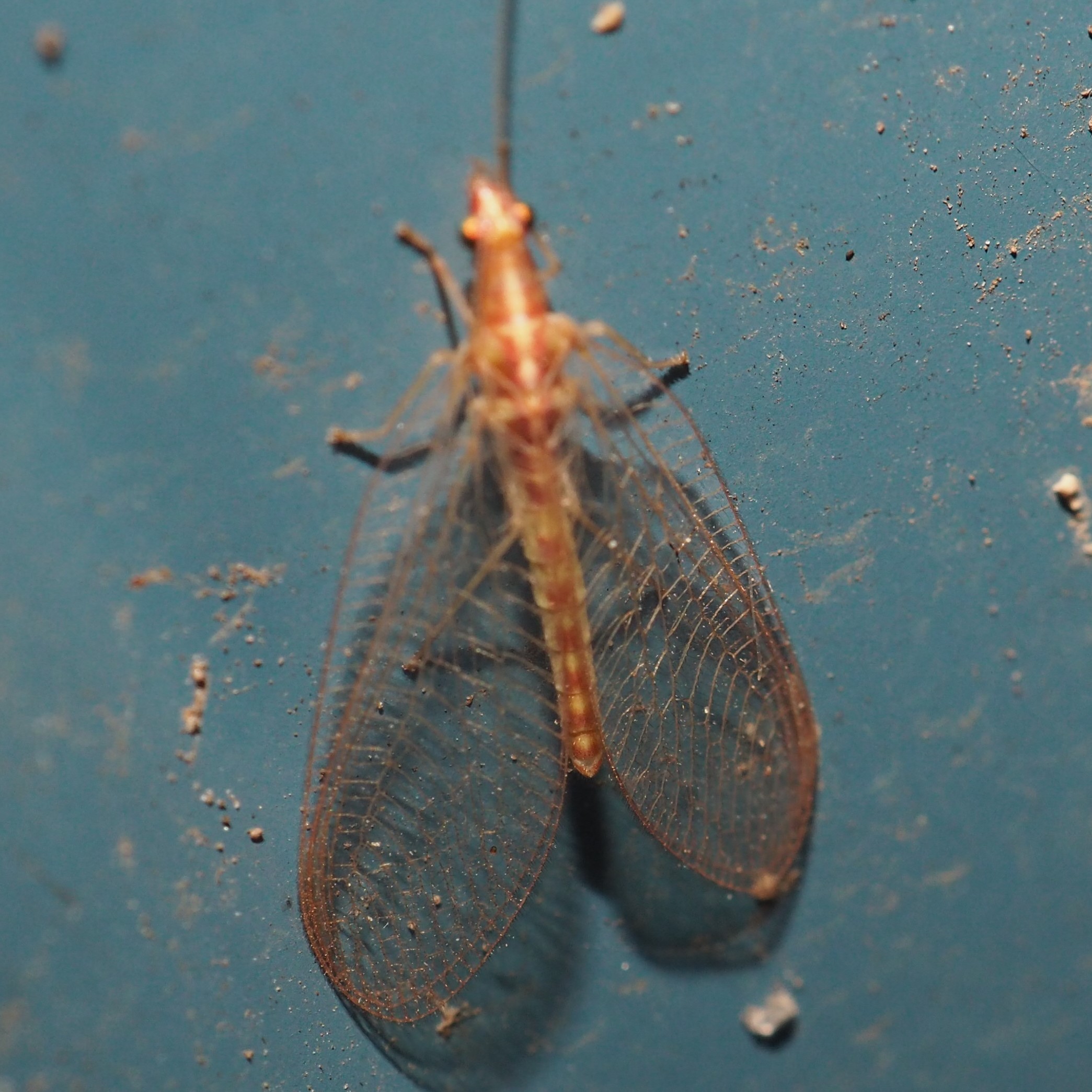
Here are some more of those plentiful tiny Moth Flies, even smaller than the Bathroom Moth Flies, and about as plentiful. Number 1 is from last week. Number 3 has some interesting cord-like structures around the neck.
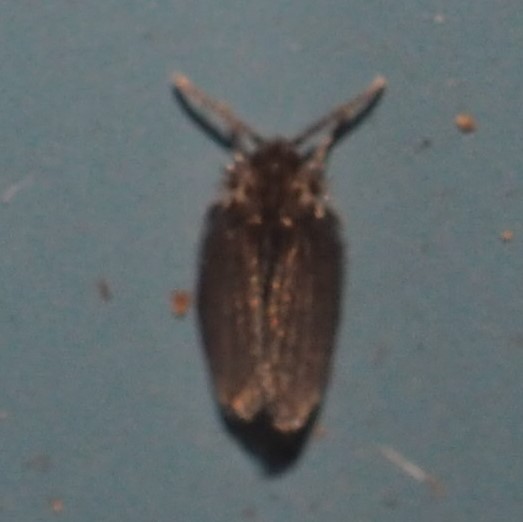
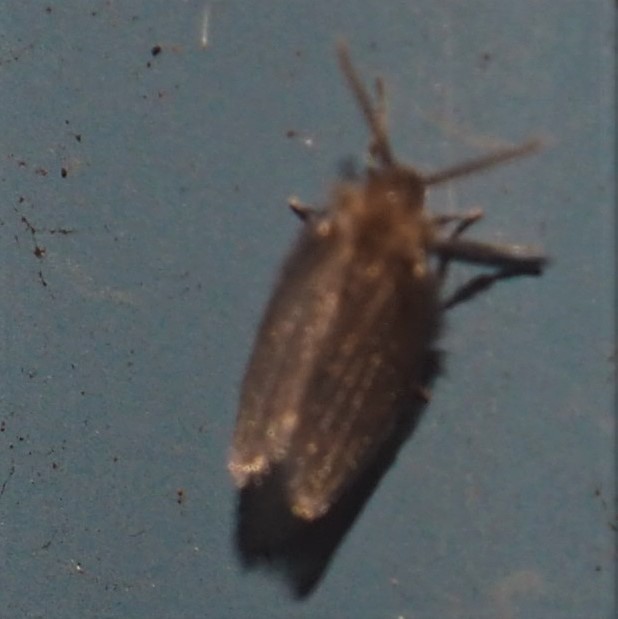
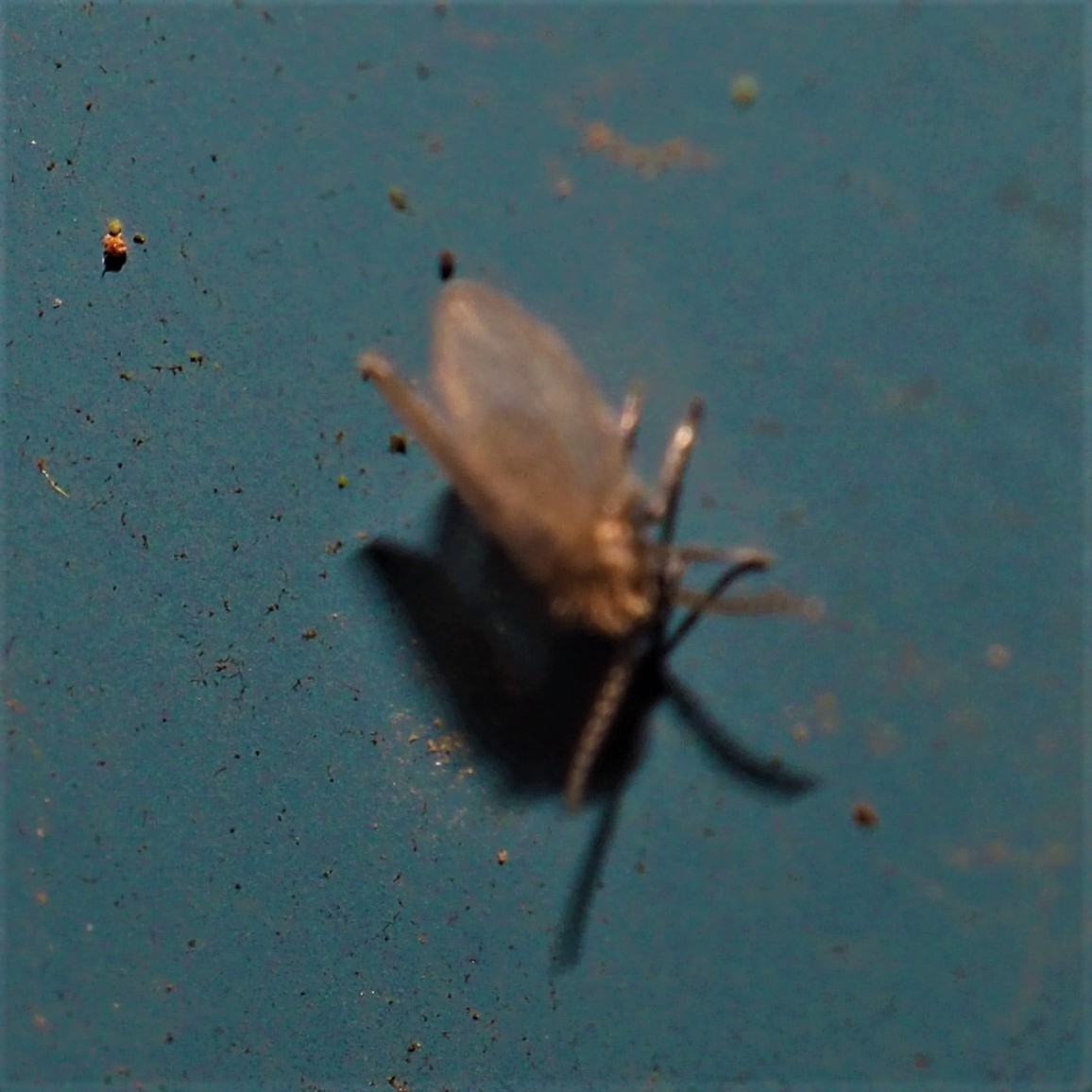
Here is Jadesy. The blue-brown-green bits are where she was hurt by the frost when the temperature fell just below 0 F. I'll do cosmetic surgery to see how badly she was injured. Picture 2 zooms in on the most rotten bits.
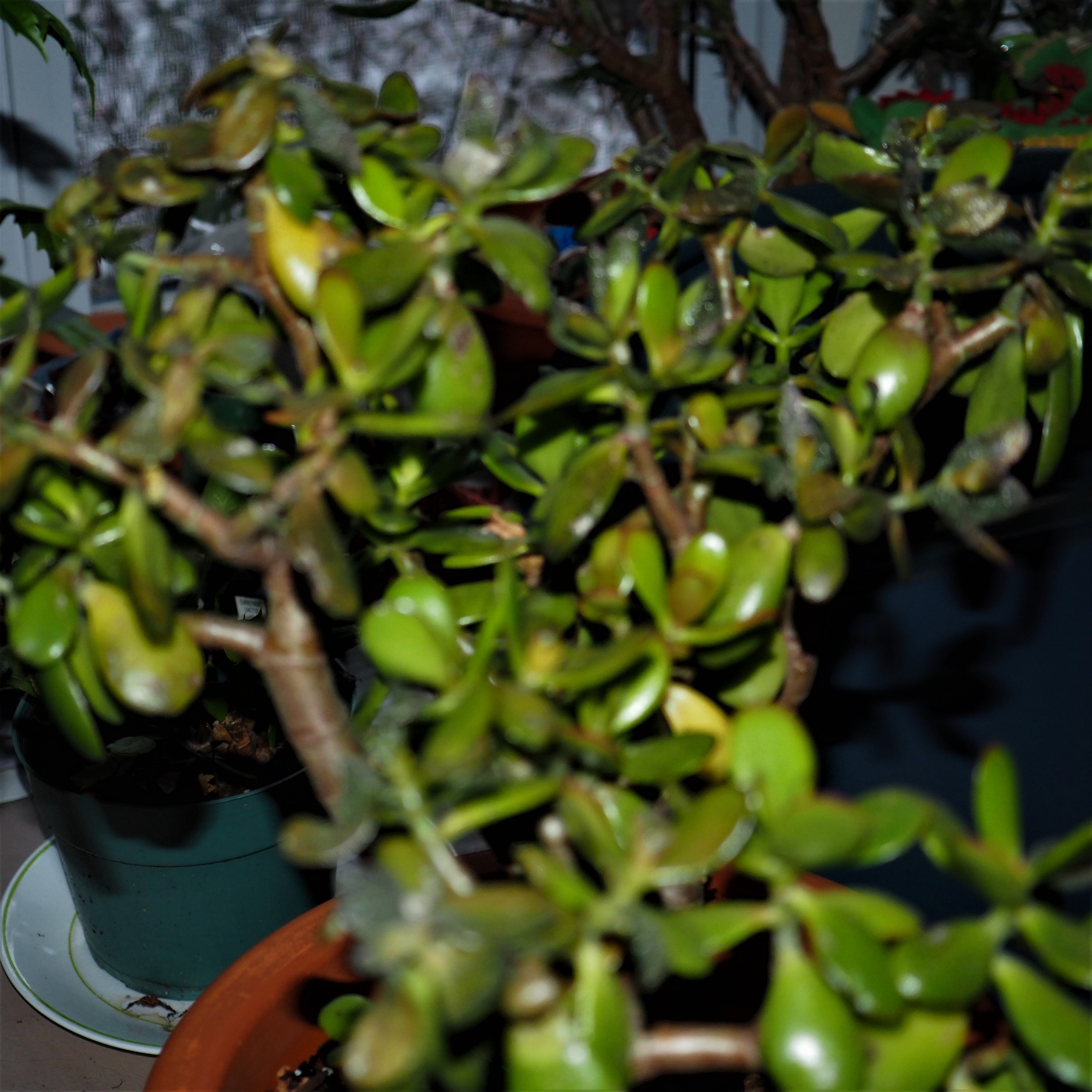
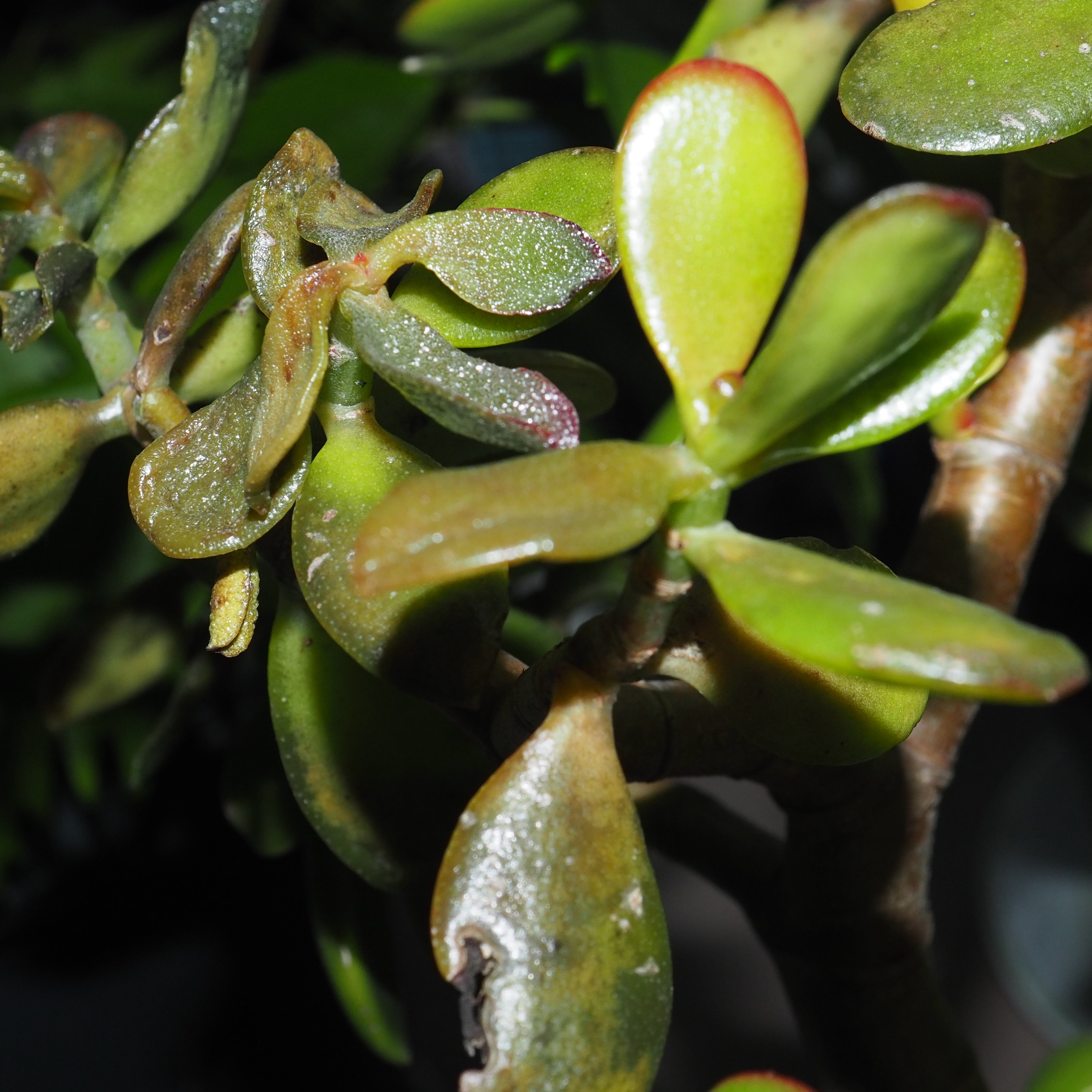
The Pond pump is now turned off. The water that was splashing in began to freeze as it landed in the Pond, so it was just a matter of time before it would freeze and burst the hose. Here's what it looked like today just after I unplugged the pump. The net that I dumped last week only has a few leaves in it, so I will probably be able to pull it for the season in a few days. (Next time the top is thawed.) The red arc goes from the tip of the hose and splashes onto the next dark mark, where some small leaves must be piling up.
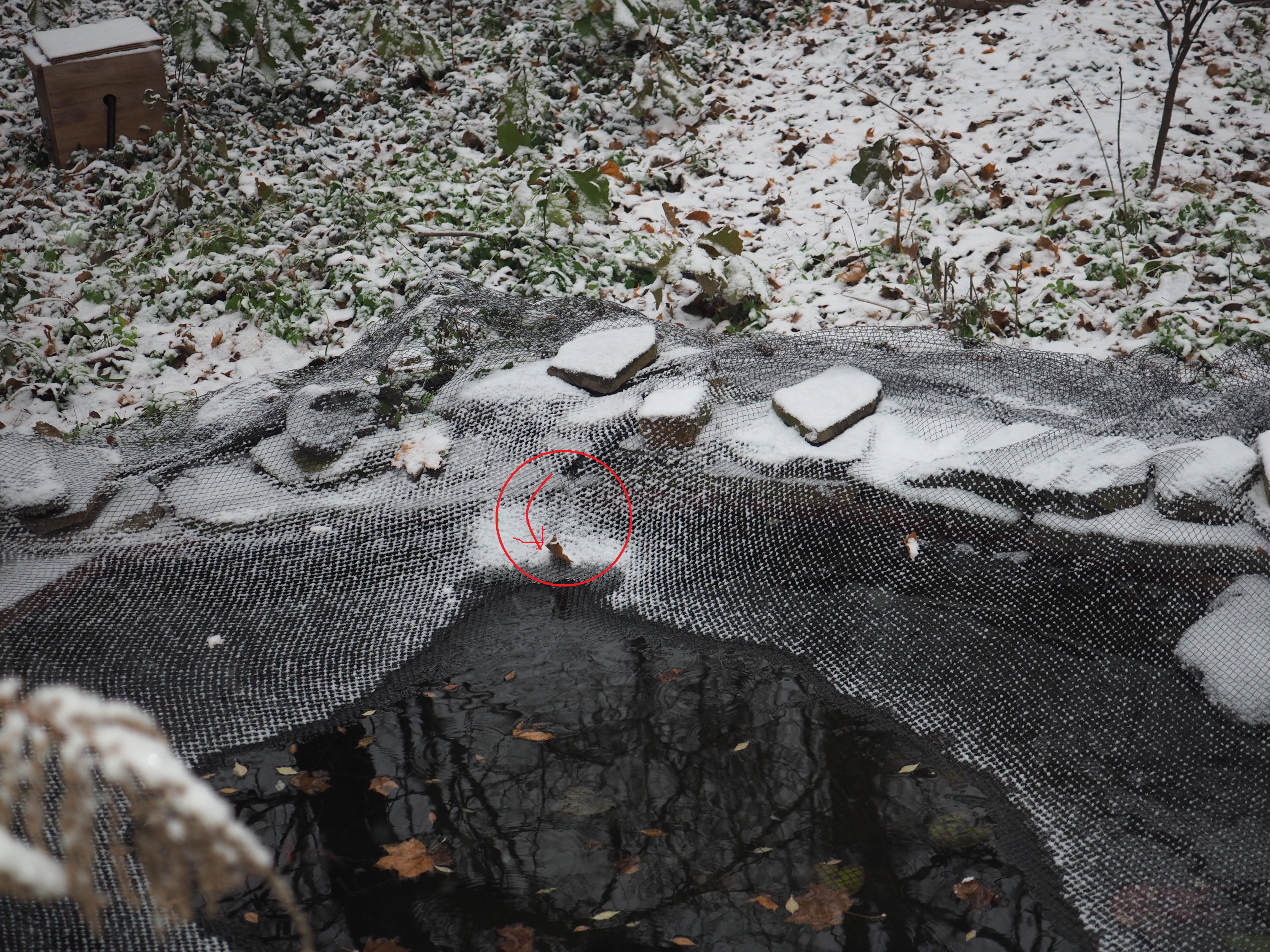
That's about it, but we still have a couple of brave Spider kin. One of them is a Harvestman - the first one.
Then we see a Common House Spider, and then a delicate Cellar Spider. During the winter we'll see quite an assortment of Spiders on the Wall of Fame. I don't know how they survive the kind of cold we'll get. But they do!

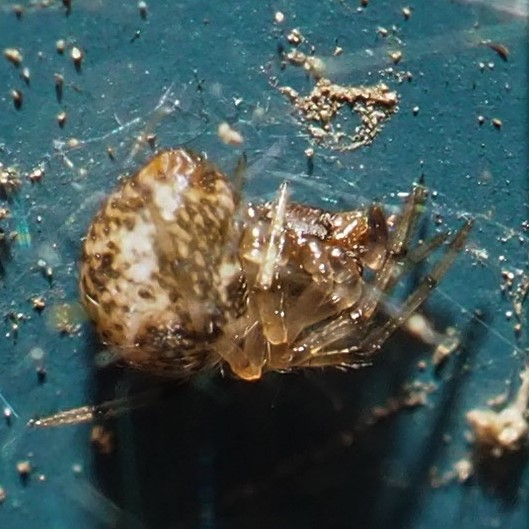
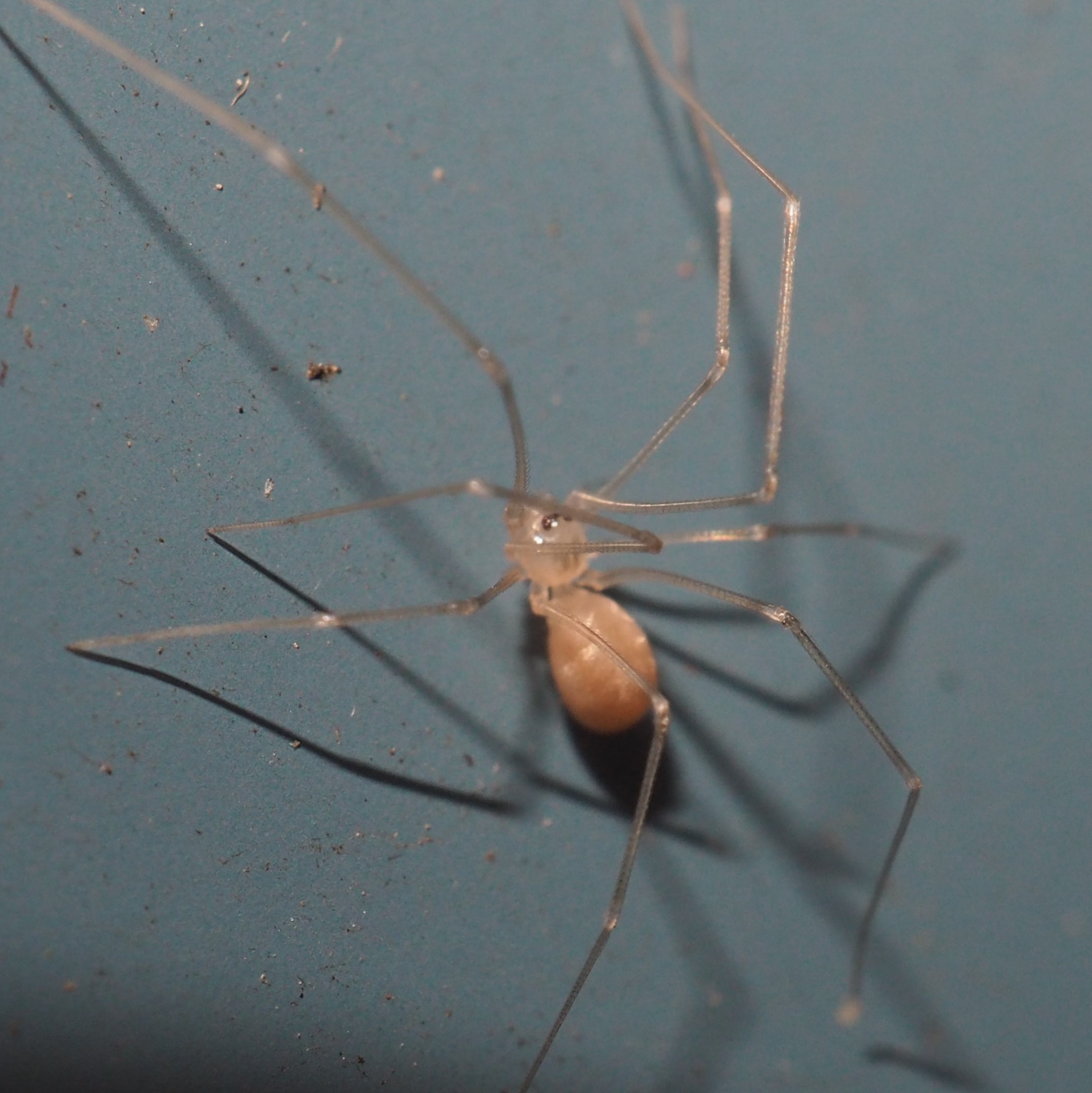
We'll also be seeing the large Crab Spiders, such as maybe one of the Ground Crab Spiders (genus Xysticus), the first spider below, or its near relative, Ozyptila (second one below), or Bassaniana (third), or "the other one", that is, one of the four big Crabs that I don't think I've ever seen. We haven't started seeing these beautiful Crab Spiders yet, but just wait a bit. It was such fun to go through my files of pictures to find these pictures!
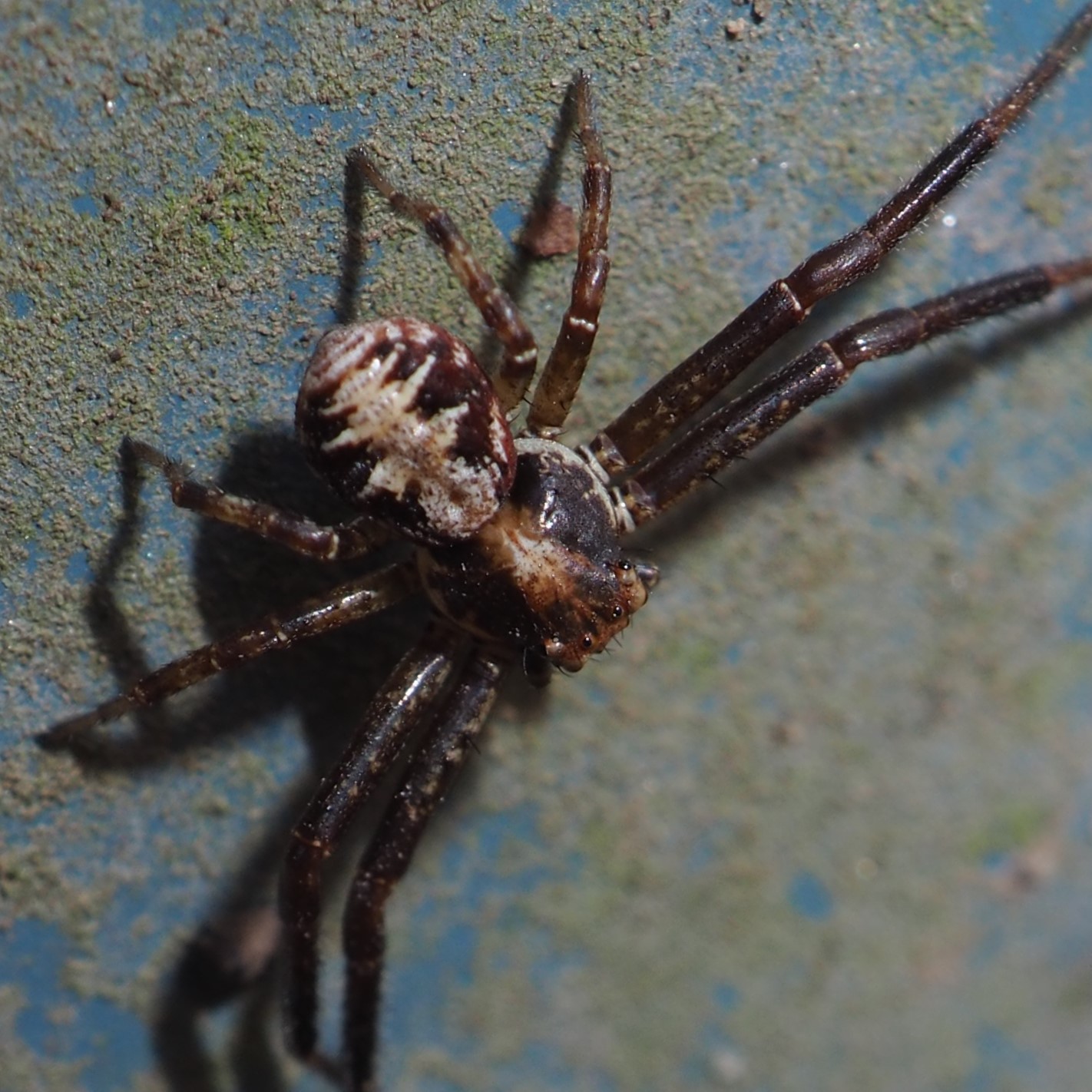
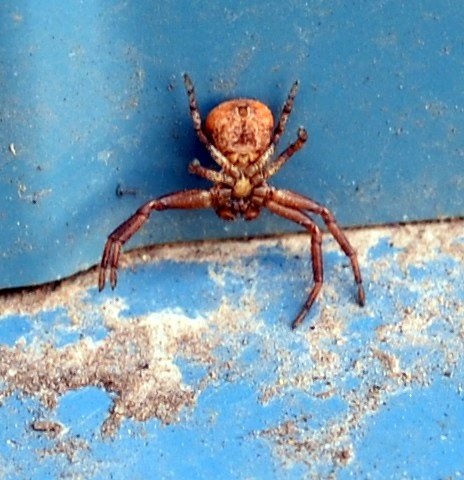
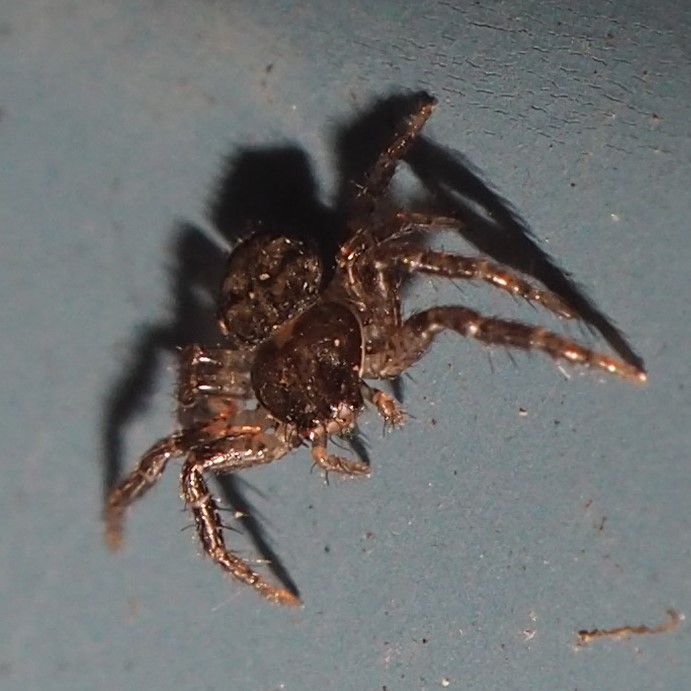
So the big bird flew down the chimney, except that I had already bought a small Duck, cranberries, chestnuts (from Italy, who knew?). When the Great Turkey saw this, it breathed a sigh of relief and scooted back up the chimney. The duck's goose was cooked. Guess who liked it the best - Spooky the Black Cat. She even lapped up the soup and duck fragments that I'd boiled to a pasty Duck Soup. I hope you all had a nice day, and even saw some family or friends that you had been putting off for a while. Unfortunately, now suddenly I have several friends who tested positive for Covid. So maybe I'll put off the in-person Latke party again. Hope they'll have Zoom running! Anyway, all of you, please be as safe as possible. Take care, and if there are enough little creatures outside maybe we'll have a new Blog next week. Or we'll skip a week. Wish I could join you with this on Zoom!
Love, Martha
Back to November 21, 2021
Forward to December 5, 2021
Back to main menu
copyright Martha O'Kennon 2021


















































